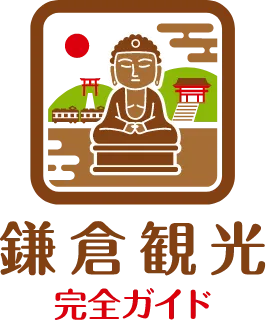Eisho-ji Temple (英勝寺)
Discover Eisho-ji Temple (英勝寺)
Founded in the mid-17th century, Eisho-ji Temple is the only surviving nunnery in Kamakura today. It was built on the former residence of Ota Dokan, a renowned military commander of the 15th century. The temple was established by Lady Okatsu—later known as Eishoin—who was a concubine of Tokugawa Ieyasu (徳川家康) and a descendant of Ota Dokan. It was created as a sacred place of devotion for women and to honor her ancestors.
Throughout the Edo period, noblewomen from the Mito Tokugawa family served as head nuns, earning the temple the nickname “The Mito Nunnery.” It was highly regarded and protected by the Tokugawa shogunate for its distinguished status.
Architectural Highlights and Natural Beauty
The temple grounds preserve many structures from the early to mid-17th century, such as the main hall, Sanmon Gate, belfry, memorial hall, and its gate. All of these are designated Important Cultural Properties. The main hall features intricate carvings of the twelve zodiac animals, and its ceiling is adorned with paintings of dragons, celestial maidens, and mythical birds such as the karura.
The straight roofline of the main hall, Kamakura’s only hipped-roof belfry, and the peony carvings on the memorial gate embody the spirit and aesthetics of traditional Japanese architecture.
Cultural Significance and Blessings
As a place dedicated to women’s prayer and spiritual practice, the temple conveys the cultural heritage of female devotion. Inside the main hall resides a triad of Amida Buddhas said to have been donated by Tokugawa Iemitsu (徳川家光), reflecting both the prestige and sacred intent of the temple.
Experiences and Seasonal Offerings
On select days, the temple’s shoin (drawing room) hosts casual tea ceremonies. The tea room, overlooking the hillside, is especially beautiful during wisteria season.
Access and Visiting Hours
Eisho-ji Temple is about a 10 to 15-minute walk from the west exit of Kamakura Station. There is no dedicated parking, but several paid parking lots are available nearby. Admission is ¥300 for adults, ¥200 for high school students, and ¥100 for younger children. Hours are from 9:00 a.m. to 4:00 p.m., with the temple closed on Thursdays.
Best Times to Visit
While the grounds are compact, you can enjoy a leisurely visit in 30 to 60 minutes. Early mornings or late afternoons offer a calm atmosphere ideal for appreciating the bamboo grove and seasonal flowers. Wisteria bloom in spring, hydrangeas appear around the main hall and grove in early summer, red spider lilies and maple leaves color the fall, and daffodils brighten the winter landscape. (Note: A once-famous camellia tree has died in recent years.)
Nearby Spots Worth Exploring
Within walking distance are other tranquil destinations like Jufuku-ji Temple (寿福寺), the Kamakura City Kawakita Film Museum (鎌倉市川喜多映画記念館), and Jokomyo-ji Temple (浄光明寺), which houses several important cultural treasures. These quiet locations make for a fulfilling short walk through Kamakura’s historical core.
Who Should Visit?
- Those interested in historical architecture and women’s religious heritage
- Lovers of flowers and serene landscapes
- Travelers seeking a peaceful escape from the crowds
- Guests with flexible morning hours and an appreciation for quiet reflection
Wrap-Up: Finding Quiet Grace While Staying at Tosh’s Place
Eisho-ji Temple offers a quiet yet powerful glimpse into the lives and legacies of women from the Sengoku era to today. Its graceful architecture, seasonal flora, and secluded bamboo grove make it a rare sanctuary. By staying at Tosh’s Place (トシズプレイス), you can enjoy a relaxed morning visit free from crowds and immerse yourself in this unique cultural experience on your own terms.
